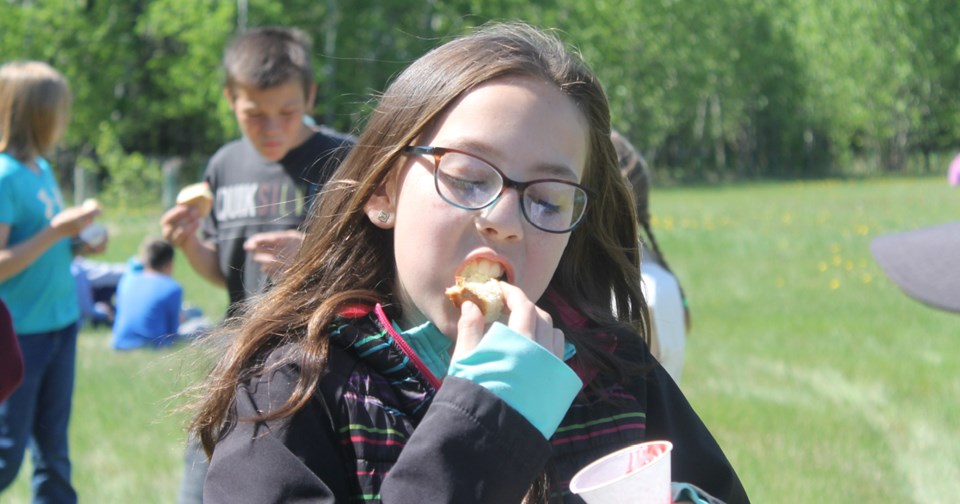STAR CITY — Carrot River and Star City youth got a tasty cultural experience, with a workshop on Indigenous nutrition.
Shana Smokeyday gave the workshop to students at Star City School on May 31, at an event called School in the Bush.
For the event, students of the two schools got to go outside and take part in various workshops highlighting Indigenous culture.
“Land-based learning has always been a part of First Nations culture,” said Debbie Mason, a Star City teacher and organizer with the program. “It encourages critical thought through interaction with the land, an understanding of nature and its relation to science – all the while connecting with and celebrating Indigenous culture.”
Smokeyday prepared a traditional meal for the students, like her grandmother would have made.
“I am a Saulteaux First Nations, there is a small group of us,” Smokeyday said. We’re mostly Cree around Saskatchewan. My ancestors came from Manitoba.”
She said she wanted to give the workshop, because she wanted to give an insight to how her ancestors ate, the simplicity of it and that “it’s just nice to share with the kids”.
Included in this meal was bannock, a raspberry sauce and moose meat stew.
“This is everything that we used to go out camping and cooking.”
Smokeyday welcomes people to make the recipes at home, even if they’re not Indigenous.
“I think it’s culturally appropriate,” she said. “I don’t think food should be designated to a certain type of culture, I believe everybody should be able to cook it and try it and I hope kids do go home and want to try it and make it with their families.”
The moose she used for the stew was one her husband killed about four months earlier.
“The moose stew is pretty basic. It’s just slow cooked in the slow cooker with salt and pepper and onions and garlic and that’s about it.”
She cooks the moose stew until it is tender. This takes about eight to nine hours.
Smokeyday said preparing the moose stew at home may be a little more difficult, unless they come from a hunting family.
“If you’re a hunting family, and you know someone you can get moose from, it’s very, very easy to cook.”
Next is her bannock.
“Everyone loves bannock, I always get kids asking me what my recipe is,” Smokeyday said. “I personally don’t have a recipe. I pour and use my hand measurements, but I always tell them you can find [a] bannock recipe online. It’s fun to do, super easy.”
Her traditional bannock style is over a campfire in a cast iron pan.
She said it’s a staple that you can fry, bake or choose to put yeast into.
“It really depends on the family and who taught you. A wide variety of bannock, for sure.”
The last delicacy, is the boiled raspberries.
For the raspberries, she boiled them with a little bit of honey as a thickening agent
“My grandparents, we always used to go berry picking,” Smokeyday said. “You just pick the berries, freeze them, or else you can put them in the pot like that. Honey, you put in a little bit of honey and my grandmother used to put flour in it and that’s what she used to thicken it up. It’s kind of like a jam, almost.”
She said in making it that morning, her entire kitchen smelled of raspberries.
The only negative to the recipe is that unlike jam it can’t be preserved and doesn’t last long in the fridge.
“We just dip the bannock in there,” Smokeyday said. “It’s kind of like a jam.”
Specifically, these recipes were chosen because it’s her family’s traditional meal.
“This was always the go-to thing my grandma made for us when we were having a feast, big get-togethers. It was always the moose or deer stew, and then the berries and then the bannock. So it’s what’s easy for me.”
Her goal was to know that the youth are interested in her culture and the way they cooked.
“I find we’re just in a time where all the kids are actually willing to try and wanting to, and even if they don’t like it, it’s just the fact that they said, ‘I got to try moose stew’.”



